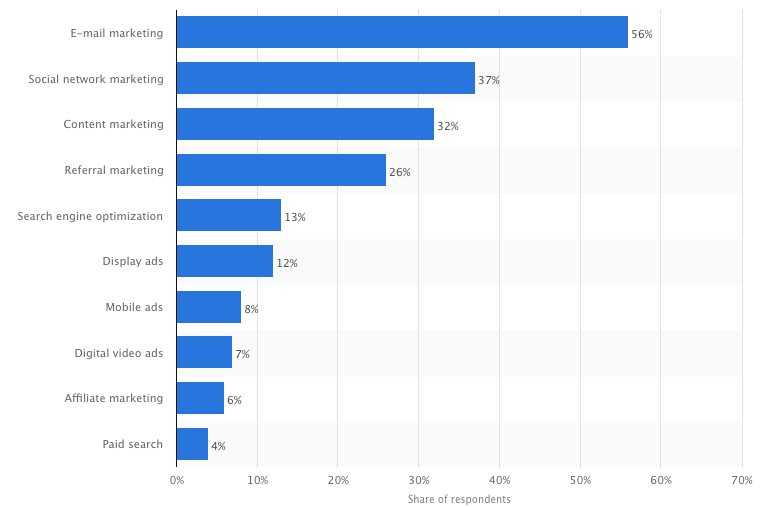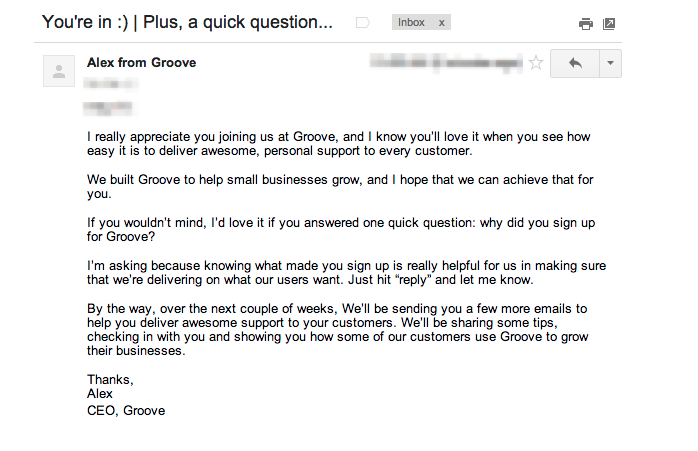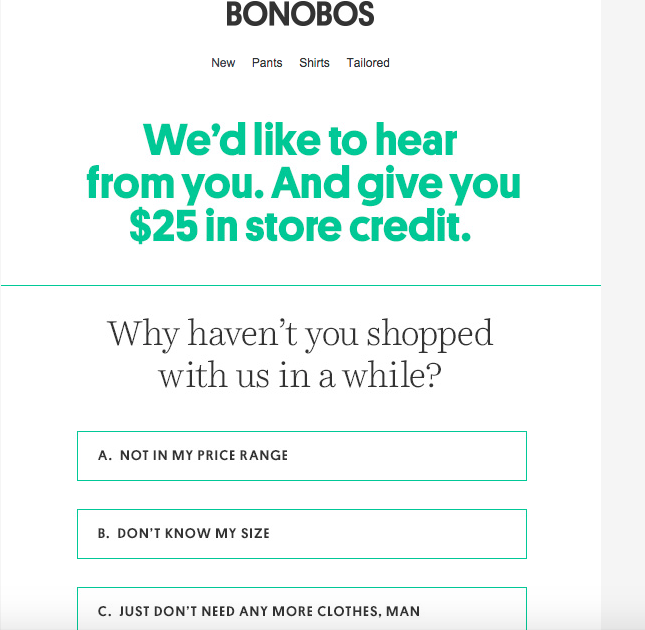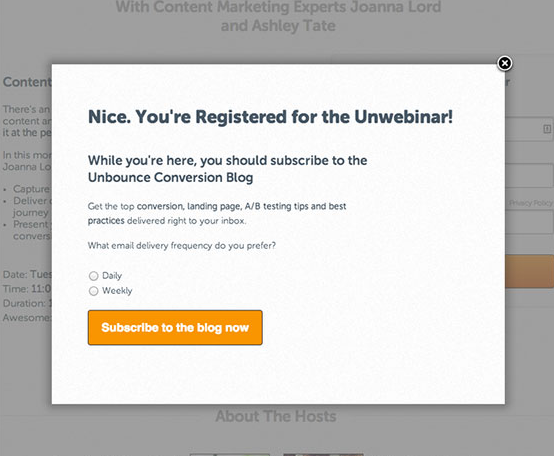
Digital marketers place a lot of emphasis on conversions - and for good reason. Conversions (or desired actions that you want your users to take, such as downloads or sales) represent success. But of course, success doesn't end there. You've now created a relationship that needs to be nurtured if you want to guide your lead to a sale, or maintain customer loyalty post purchase.
Don't think retention matters as much as finding new leads? Consider these statistics:
- [tweetable]80% of a business's future profits will come from 20% of its existing customers[/tweetable]
With that much potential, customer retention should be a priority for all digital marketers. Let's take a look at some tips for providing a positive post conversion experience for both B2C and B2B companies.
Be Timely
When it comes following up after a conversion, timing is critical. You don't want to put too much distance between you and the customer after that important point of contact. People are busy. After a while, they may even forget that they engaged with your company in the first place.
Additionally, if you're upselling or want to show them another offer, do it while they're still in the same frame of mind before the human tendency for buyer's remorse sets in.
They're interested in your product or service at a very particular moment; take advantage of the opportunity. Present them with additional deals, information, etc. before they click away.
Offer An Upsell
Upselling has stood the test of time as a marketing tactic for one simple reason: it's effective. When people have already decided to purchase something, or if they need a little more incentive, offering extra at little to no cost can be a very persuasive strategy.
In addition to improving customer satisfaction, upselling benefits your business as well. In the world of digital marketing, increased social media followers and backlinks are extremely valuable to attracting more leads and building SEO.
As a post conversion engagement strategy, offer additional products, services or content in exchange for a Like or share in social media (in addition to the purchase price, if applicable).
But remember - make your upsell relevant. Consider the lead or customer's potential pain points. Will they need other items to supplement their purchase? Will additional information in the form of a white paper, video, or ebook help?
Solicit Feedback / Reviews
Customer feedback is critical. You may think your website or other content looks and functions in a particular way, but you'll never know for sure unless you ask your customers what they think.
Likewise, in order to gauge customer satisfaction with your products or services, ask people for their thoughts. They might not jump at the chance to provide feedback, as it takes time. So offer an incentive.

Image from Marketing Land
These days, customer reviews can significantly impact a business online. Ask people to rate your business, products or services after engagement. Some companies shy away from encouraging reviews, since they make them vulnerable to criticism.
However, when people have the option to voice their opinion, it suggests that the brand cares about their experiences, thereby leaving a positive impression with customers, and increasing retention rates. It also communicates confidence and trustworthiness, both of which are essential to maintaining customer relationships.
Stay Connected With Social
After someone expresses interest in your business, either through a download or sale, it's an excellent time to remind them of your presence in social media. While this tactic isn't exactly new or innovative, it can be effective.
It's another form of upsell, in fact. In addition to providing valuable and entertaining content for your followers, Facebook, Twitter, Pinterest, etc. are sales channels. The promotions and contests that you advertise will be seen not just by new fans, but by the previous customers as well. It may not be as targeted as, say, email, but social media is a reliable way to retain leads and customers.
Follow Up With Email
Email is the most effective form of communication after a conversion. You can stay connected with people on a one-on-one basis, supplying them with useful information.

Graph via Statista
For brands, email represents an opportunity to check in and remind people that you haven't forgotten about them. Provided you don't engage in hard selling, you'll establish a lasting connection.
Using automation software, you can send people coupons on their birthday, drip-feed them valuable content, and offer specialized upgrades based on previous engagement or purchases.
And of course, whenever possible, incentivize the upgrade. In exchange for the user's social media promotion of your brand, users will receive extra content or a discount on their next purchase.
Plus, email is ideal because it comes with no strings attached for users. It's a message they can read on their own time (or perhaps not read at all). However, a concise, attention-grabbing subject line will guarantee that at least part of your post-engagement message gets through.
Send Customized Messages
People respond to email because it's personal. Even with its relatively low open and click-through rates, email addresses users' personal history with your brand.

(This email establishes a personal connection while asking for feedback: 2 birds with 1 stone)
Of course, you can always use email to notify all of your users about an upcoming sale or promotion. But use its potential for personal connection to address specific user behavior.

One of the great advantages of digital marketing is its ability to drill down your audience. Traditional advertising broadcasts one message to many, but with digital - especially email - you can track specific user behavior and speak to them individually.
Targeting people before a conversion is obviously important, but if you fail to do it afterwards, you're missing a big opportunity. Each person's feelings about your brand will impact their future buying decisions, and what they tell other potential customers about your business.
Continue To Provide Value
One of the major goals of content marketing is to provide value to people, and this is especially important during the post conversion stage of the customer journey.
B2Bs in particular should use email and other targeted marketing efforts to follow up with leads. You can notify them of new blog posts discussing topics relevant to their particular conversion.
For example, if they filled out a form on your website in exchange for a download about, say, digital marketing best practices, you can follow up by sending them more links to additional blogs or ebooks regarding SEO, social media strategy, etc.
Create A Post-conversion Landing Page
After users have converted, take them to a customized landing page. This presents a chance for you to a.) thank them for their conversion (whatever it may've been), and b.) upsell or offer additional content.

Landing pages give you one more crucial opportunity to control user behavior before people part with your brand. Here are a few guidelines for creating a successful post-conversion landing page:
- Offer a similar product or piece of content to maintain relevancy while avoiding an overly sales-y approach
- Use similar colors and typography to previous pages to avoid confusion
- Adopt a more personal tone as you've now begun a relationship
- Include a clear and bold CTA button
- Consider using video featuring you or people from your team (it maintains your personal connection)
Now Read:
- 6 Ways To Optimize Your "Thank You" Page For Higher Conversions
- 25 Amazing Ways to Boost eCommerce Conversion Rates
* Leader image by Viktor Hertz
